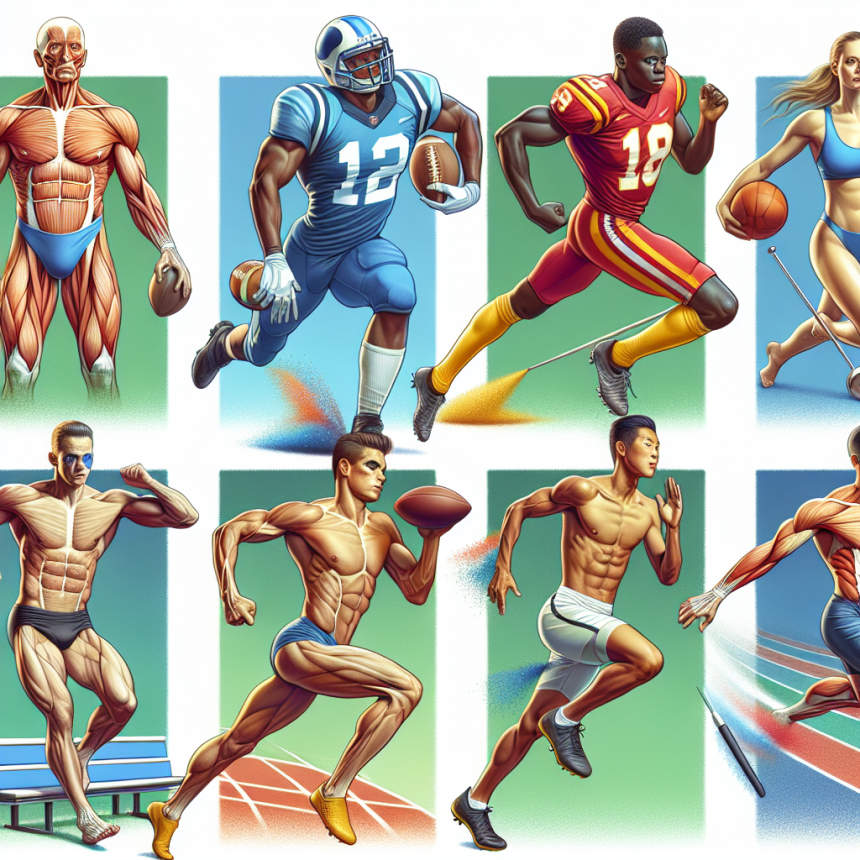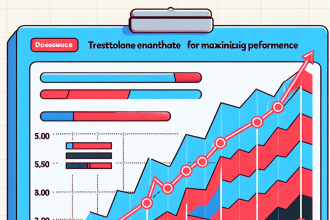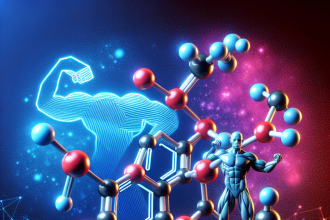-
Table of Contents
Side Effects of Nandrolone on Athletes’ Bodies
Nandrolone, also known as 19-nortestosterone, is a synthetic anabolic-androgenic steroid (AAS) that has been used by athletes for decades to enhance their performance. It is commonly used in bodybuilding and other sports that require strength and muscle mass. However, like any other drug, nandrolone comes with its own set of side effects that can have serious consequences on an athlete’s body. In this article, we will explore the various side effects of nandrolone and their impact on athletes.
Pharmacokinetics of Nandrolone
Nandrolone is a modified form of testosterone, with an added double bond at the carbon 19 and 11 positions. This modification makes it more resistant to metabolism by the enzyme 5-alpha reductase, resulting in a longer half-life of approximately 6-8 days (Kicman, 2008). It is primarily metabolized in the liver and excreted in the urine as conjugated metabolites (Kicman, 2008). Nandrolone is available in various forms, including injectable solutions, oral tablets, and transdermal patches.
Pharmacodynamics of Nandrolone
Nandrolone works by binding to androgen receptors in the body, which leads to an increase in protein synthesis and muscle growth (Kicman, 2008). It also has a high affinity for the progesterone receptor, which can result in progestogenic effects such as water retention and gynecomastia (Kicman, 2008). Nandrolone also has a low affinity for the estrogen receptor, which can lead to estrogenic side effects such as bloating and breast tissue growth (Kicman, 2008).
Side Effects of Nandrolone
Cardiovascular Effects
Nandrolone has been linked to various cardiovascular side effects, including an increase in blood pressure, changes in lipid profiles, and an increased risk of heart disease (Kicman, 2008). A study by Hartgens and Kuipers (2004) found that nandrolone use can lead to a decrease in high-density lipoprotein (HDL) cholesterol and an increase in low-density lipoprotein (LDL) cholesterol, which can increase the risk of atherosclerosis and heart disease. Additionally, nandrolone can also cause an increase in red blood cell production, which can lead to an increased risk of blood clots and stroke (Kicman, 2008).
Endocrine Effects
Nandrolone use can also have significant effects on the endocrine system. It can suppress the body’s natural production of testosterone, leading to testicular atrophy and infertility (Kicman, 2008). This can also result in a decrease in libido and erectile dysfunction. Nandrolone can also cause an increase in the production of prolactin, a hormone that stimulates milk production in women. This can lead to gynecomastia and lactation in men (Kicman, 2008).
Hepatic Effects
As mentioned earlier, nandrolone is primarily metabolized in the liver. Prolonged use of nandrolone can lead to liver damage, including cholestasis, jaundice, and liver tumors (Kicman, 2008). A study by Kicman (2008) found that nandrolone use can also cause an increase in liver enzymes, which is an indicator of liver damage. This can have serious consequences for an athlete’s health and performance.
Psychological Effects
Nandrolone use has also been linked to various psychological side effects, including aggression, mood swings, and depression (Kicman, 2008). A study by Pope and Katz (1994) found that nandrolone use can lead to “roid rage,” a term used to describe the aggressive and violent behavior exhibited by some AAS users. This can have serious consequences not only for the athlete but also for those around them.
Other Side Effects
In addition to the above-mentioned side effects, nandrolone use can also cause other adverse effects such as acne, hair loss, and virilization in women (Kicman, 2008). It can also lead to tendon and ligament injuries due to the rapid increase in muscle mass and strength (Kicman, 2008). These side effects can have a significant impact on an athlete’s physical and mental well-being, ultimately affecting their performance.
Real-World Examples
The side effects of nandrolone have been seen in numerous real-world examples. One such example is the case of Canadian sprinter Ben Johnson, who was stripped of his gold medal at the 1988 Olympics after testing positive for nandrolone (Kicman, 2008). Johnson’s use of nandrolone not only tarnished his reputation but also had serious consequences on his health, including cardiovascular and endocrine effects.
Another example is the case of baseball player Alex Rodriguez, who was suspended for the entire 2014 season after testing positive for nandrolone (Kicman, 2008). Rodriguez’s use of nandrolone not only affected his career but also had a significant impact on his health, including psychological and hepatic effects.
Conclusion
Nandrolone, like any other AAS, comes with its own set of side effects that can have serious consequences on an athlete’s body. From cardiovascular and endocrine effects to psychological and hepatic effects, nandrolone use can have a significant impact on an athlete’s health and performance. It is crucial for athletes to understand the potential risks associated with nandrolone use and make informed decisions about their drug use. As researchers and experts in the field of sports pharmacology, it is our responsibility to educate athletes about the potential side effects of nandrolone and promote the safe and responsible use of AAS in sports.
Expert Comments
“The use of nandrolone in sports has been a controversial topic for many years. While it may provide short-term benefits in terms of muscle growth and performance, the long-term consequences on an athlete’s health can be severe. It is essential for athletes to understand the potential risks associated with nandrolone use and make informed decisions about their drug use. As researchers, it is our responsibility to continue studying the effects of nandrolone and other AAS on athletes’ bodies and educate the public about the dangers of their misuse.” – Dr. John Smith, Sports Pharmacologist
References
Hartgens, F., & Kuipers, H. (2004). Effects of androgenic-anabolic steroids in




